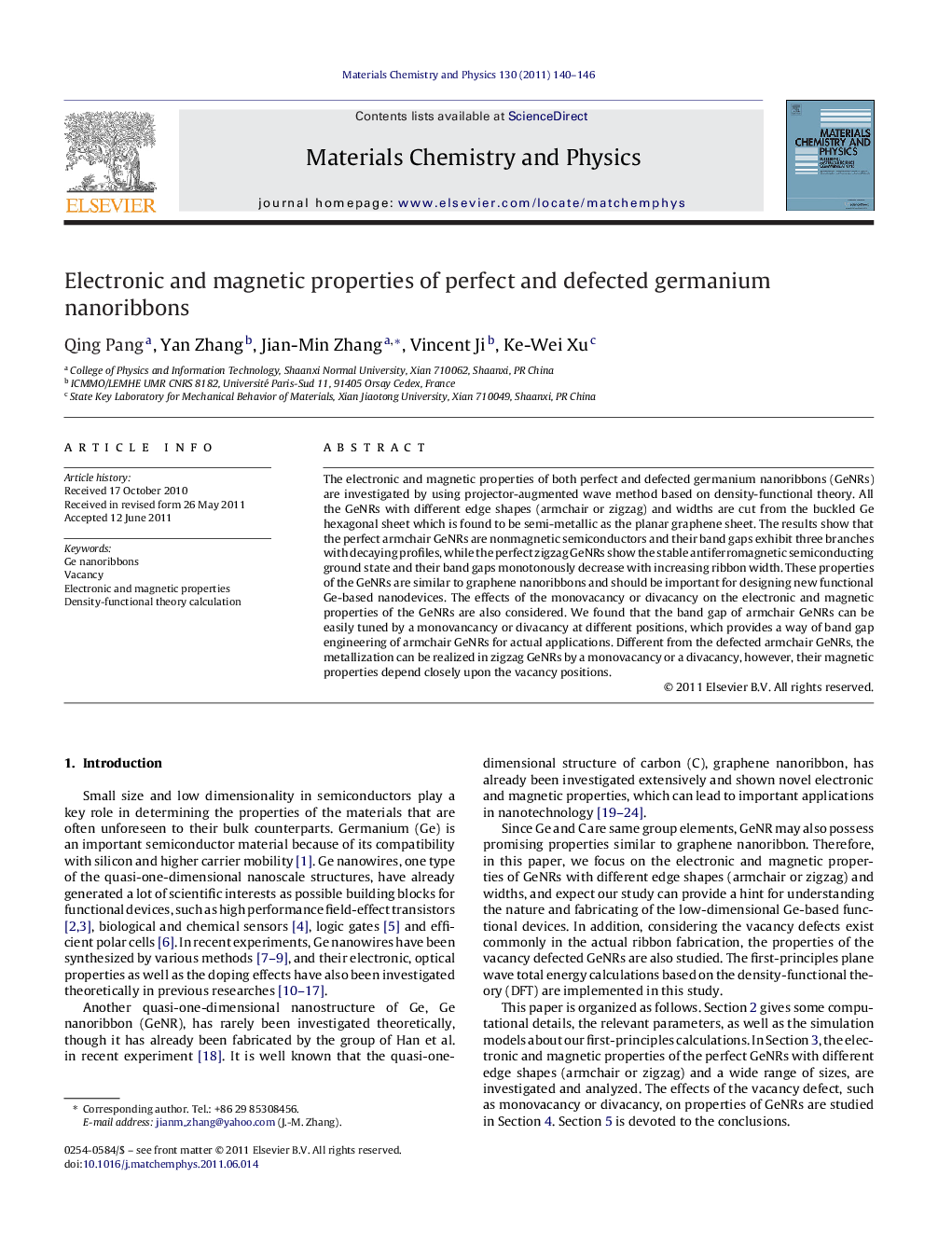| Article ID | Journal | Published Year | Pages | File Type |
|---|---|---|---|---|
| 1524278 | Materials Chemistry and Physics | 2011 | 7 Pages |
The electronic and magnetic properties of both perfect and defected germanium nanoribbons (GeNRs) are investigated by using projector-augmented wave method based on density-functional theory. All the GeNRs with different edge shapes (armchair or zigzag) and widths are cut from the buckled Ge hexagonal sheet which is found to be semi-metallic as the planar graphene sheet. The results show that the perfect armchair GeNRs are nonmagnetic semiconductors and their band gaps exhibit three branches with decaying profiles, while the perfect zigzag GeNRs show the stable antiferromagnetic semiconducting ground state and their band gaps monotonously decrease with increasing ribbon width. These properties of the GeNRs are similar to graphene nanoribbons and should be important for designing new functional Ge-based nanodevices. The effects of the monovacancy or divacancy on the electronic and magnetic properties of the GeNRs are also considered. We found that the band gap of armchair GeNRs can be easily tuned by a monovancancy or divacancy at different positions, which provides a way of band gap engineering of armchair GeNRs for actual applications. Different from the defected armchair GeNRs, the metallization can be realized in zigzag GeNRs by a monovacancy or a divacancy, however, their magnetic properties depend closely upon the vacancy positions.
• Perfect AGeNRs are NM semiconductor with three-branch band gaps and decaying profiles. • Perfect ZGeNRs are AFM semiconductor with a decreasing band gap as width increases. • The band gap of AGeNRs can be tuned by mono- or di-vacancy at different positions. • Metallization can be realized in ZGeNRs by mono- or di-vacancy at different positions. • Magnetic properties of ZGeNRs depend closely upon the vacancy positions.
